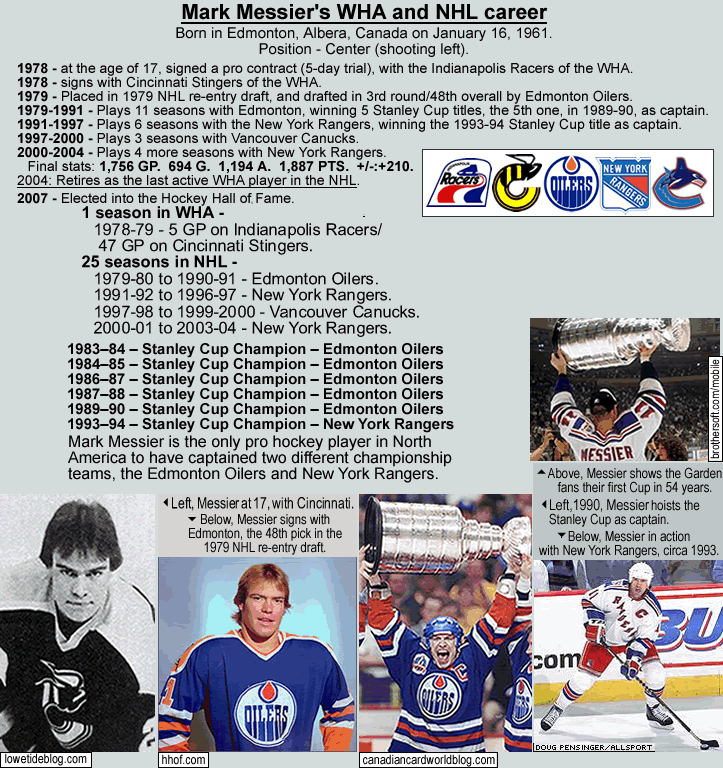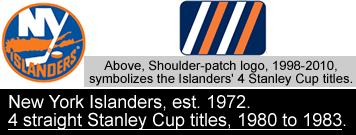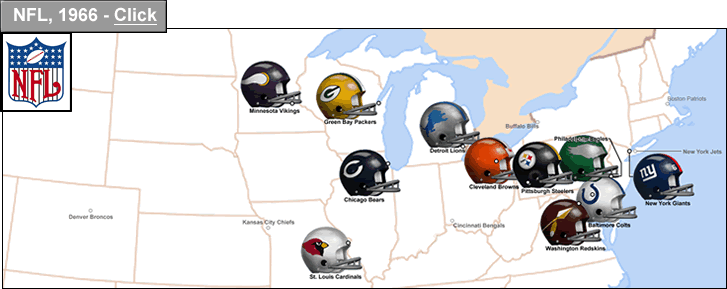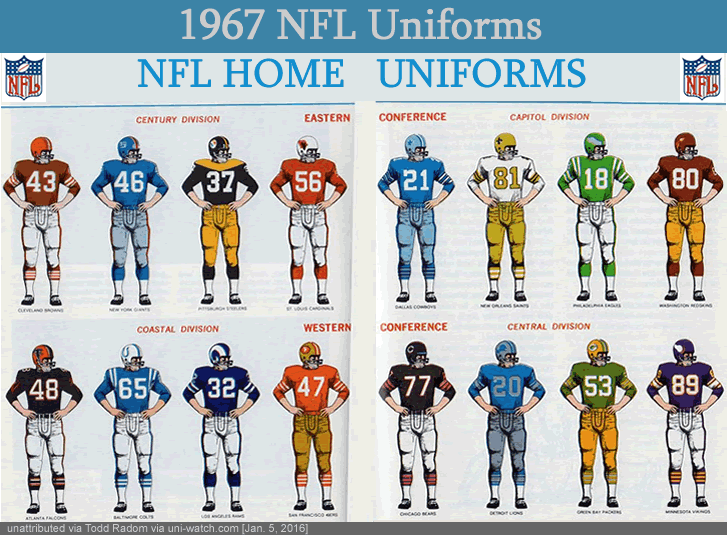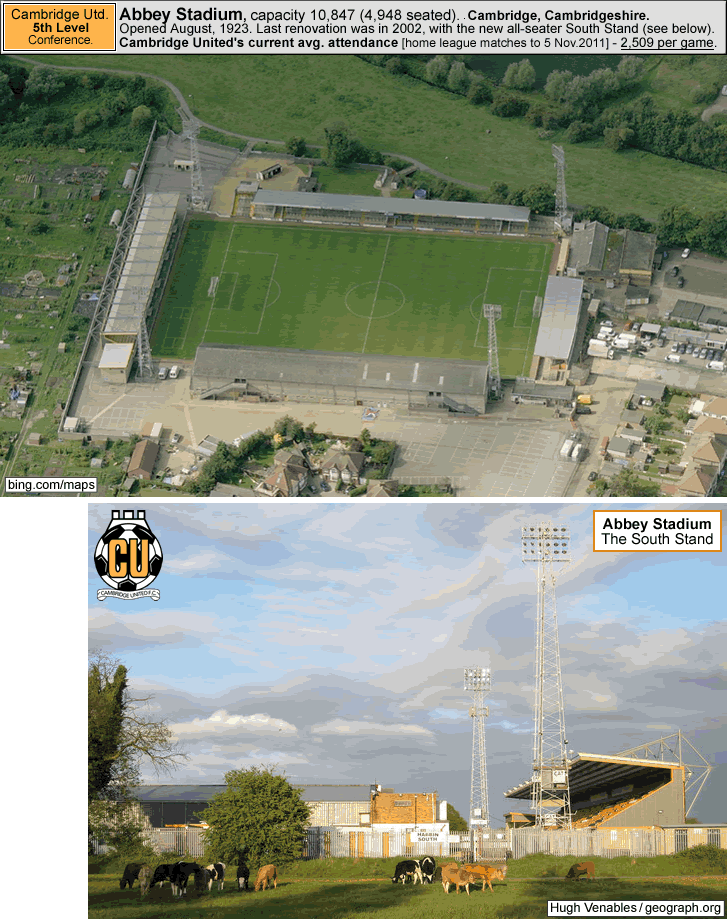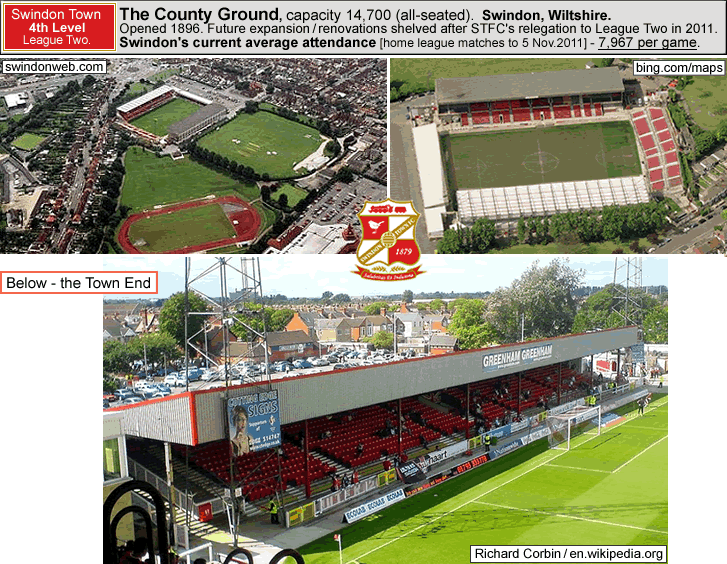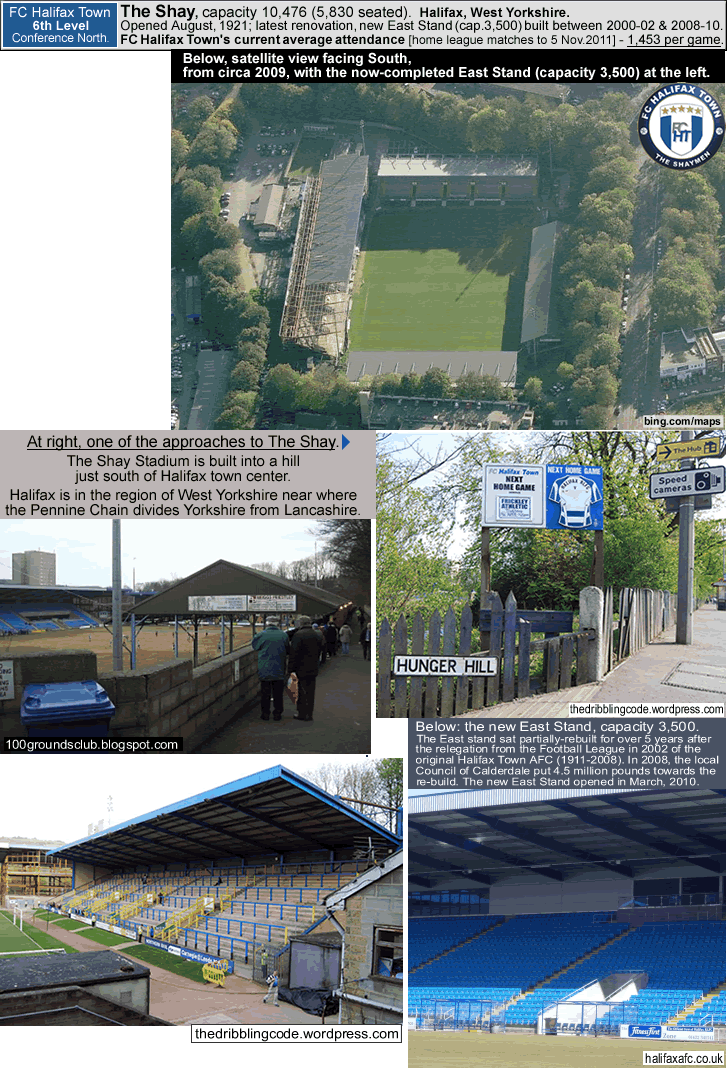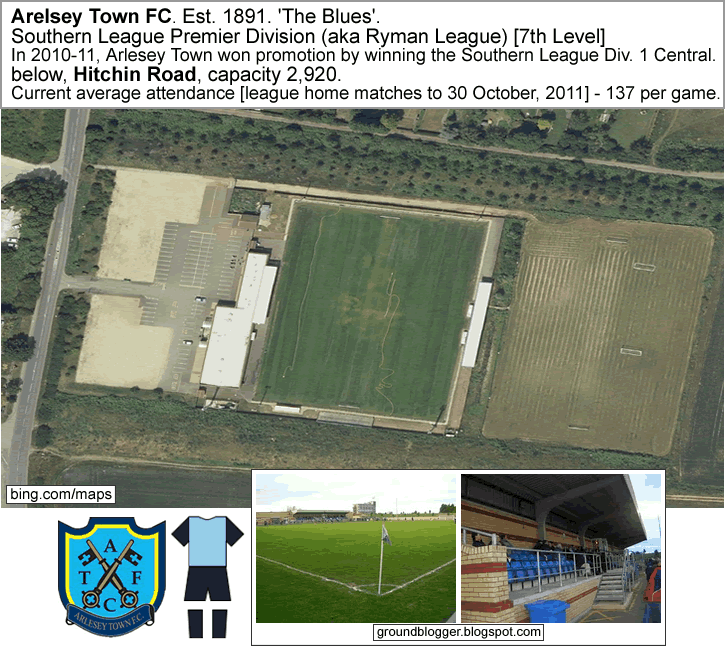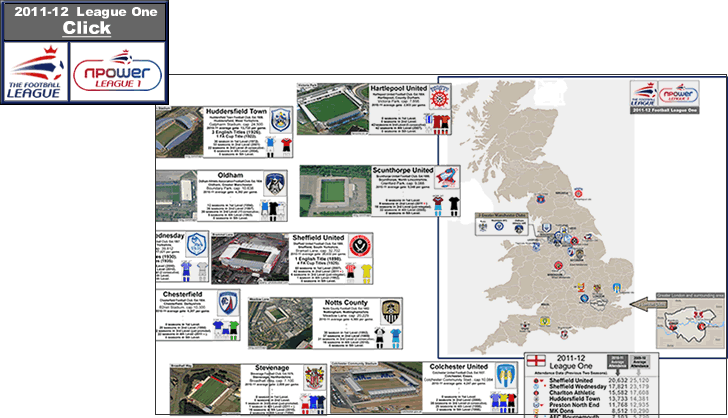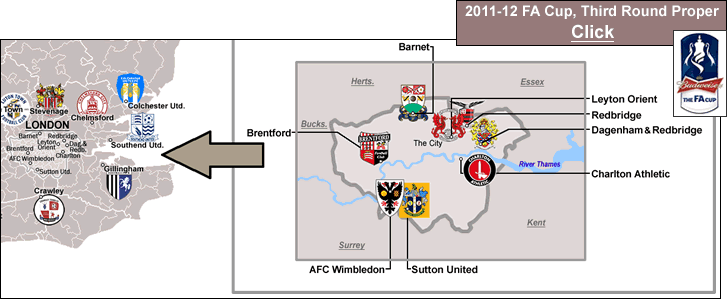
2011-12 FA Cup Second Round Proper
Here is the league breakdown of the 40 clubs left in the competition at this stage. [Note, Premier League/1st Level clubs, and Football League Championship/2nd Level clubs (64 clubs) will enter the competition in the next round, the Third Round Proper, in the first weekend of January, 2012]…
Clubs in the 2011-12 FA Cup Second Round Proper -
28 clubs are from the Football League, with 13 clubs from League One (the 3rd Level), and 15 clubs from League Two (the 4th Level).
12 clubs are Non-League Football clubs (from Levels 5 through Level 8), with 6 clubs from the Conference National (the 5th Level), 3 clubs from the Conference South (a 6th Level league), 2 clubs from the Southerm League Premier Division (a 7th Level league also known as the Evo-Stick Southern), and 1 club from the Isthmiann League Division 1 North (an 8th Level league, also known as the Ryman North).
As in the First Round, the lowest-placed club still alive in the competition is Redbridge FC, who are from East London and are an 8th Level club in the Isthmian League Division 1 North. Redbridge FC currently average 125 per game (from home league matches to 26 November, 2011). In the First Round, the Motormen drew 0-0 with the 6th Level/Conference South club Oxford City, and won the replay in Oxford 2-1 after extra time. Redbridge will play at Crawley Town in the Second Round.
…
Listed below are the 3 matches to be televised live in the USA & Canada and/or the UK, with photos of the home grounds and info on the clubs involved…
Friday, 2 December at 7.30pm GMT – Fleetwood Town v Yeovil Town – ESPN (UK).
Fleetwood Town are a coastal Lancashire-based Conference National club [5th Level], who currently [28 Nov., 2011] lead the Conference by 3 points over Wrexham (though Wrexham have a game in hand and a higher goal differemce). Fleetwood Town had the biggest upset in the First Round Proper, beating a Football League One club – Wycombe Wanderers – that was 2 league levels and 27 places above them. Fleetwood Town currently average 1,712 per game (home league matches to 28 November, 2011)).
Last May, Fleetwood Town made the Conference play-offs, but were schooled by eventual promotion-winners AFC Wimbledon, by an aggregate score of 8-1. But I’ve got a feeling that if the Cod Army don’t win automatic promotion this season, they won’t be embarrassing themselves in the play-offs this coming May. This is a club whose trajectory is pointing straight up. In a 7-season span between 2004 and 2011, Fleetwood won promotion 4 times. Fleetwood Town are in only their second season in the 5th Level, and their ambition is evident in two ways. The first way one can see that Fleetwood has their sights set on the Football League is in the number of high-profile signings they have made recently, such as ex-Wrexham FW Andy Mangan (who led the Conference in scoring when he was on Forest Green Rovers in 2008-09, and who scored 16 goals for Wrexham in 2010-11, and who currently has 6 league goals for FTFC this season so far). Mangan scored one of the goals in the First Round victory over Wycombe on 5th Novembe, on a nice volley. Highlights here…’Fleetwood Town vs. Wycombe Wanderers [Fleetwood Town 2-1 Wycombe]‘ (Footytube.com). Another big move Fleetwood Town made recently was in securing the services of FW Richard Brodie (Conference leading scorer in 2009-10, when he was on York City, and scorer of 12 league goals for the promotion-winning Crawley Town last season), on loan from Crawley Town. [Brodie actually contributed in a negative way in the Cod Army's upset win over Wycombe - he was sent off right before the end of the first half, and Fleetwood had to play the second half with 10 men.] Fleetwood Town also boasts the 3rd-highest scorer currently in the Conference – ex-Halifax Town FW James Vardy, who has scored 13 goals in 13 league games this season for Fleetwood (plus 4 goals total when at Halifax Town at the start of the 2011-12 season). Vardy is the subject of transfer speculation, but Fleetwood would do well to hold off selling him until their promotion-run is sorted. Rounding out the club’s scoring threats is FW Magno Viera, a Brazilian, who was fourth best on the list of 2011-12 Conference scoring leaders, with 22 goals.
The second way in which Fleetwood Town’s ambition to become a larger and higher-placed club is apparent is in their new stand at their Highbury Stadium – the Parkside Stand – which has a capacity of 1,841 (all seated), plus 40 luxury boxes. The roof’s not too shabby either (see below). Fleetwood Town will host Yeovil Town in the FA Cup Second Round. Yeovil Town, from Somerset, in the West Country, are a League One [3rd Level] club who currently sit 22nd, in the relegation zone. Yeovil Town never had League history prior to 2003, when they won the Conference National. The Glovers then won promotion to the third tier two years later by winning League Two in 2004-05. This is a club who has been punching above their weight since then, ending up in the bottom half of the table in 5 of their last 6 seasons. Yeovil have a rather small fan base for the 3rd Level – they currently are averaging 3,813 per game.
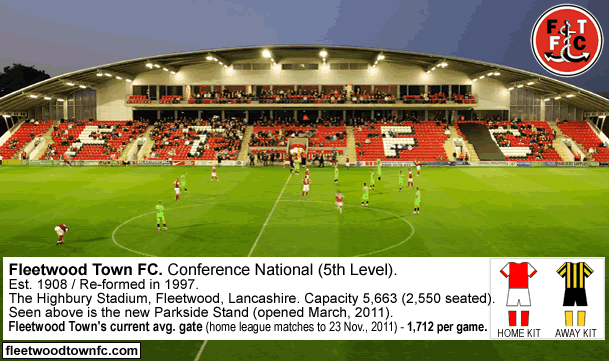
Photo credit – http://www.fleetwoodtownfc.com/club/highbury-stadium/.
…
(Early game on) Sunday, 4 December 12.30pm GMT – AFC Totton v Bristol Rovers – ITV1 (UK).
AFC Totton, nicknamed the Stags, are a Hampshire-based club in the Southern Premier [a 7th Level league], and currently sit 2nd in the league, in the play-off places, one point behind Leamington, with 2 games in hand. Totton is a western suburb of Southampton, on the eastern edge of the New Forest. The club have a brand-new ground, the 3,000-capacity Testwood Stadium, which opened on 9 February, 2011. The opening of their new ground was timed fortuitously, because 3 months later that season, AFC Totton won promotion, by winning the Southern League Divsion 1 South by 2 points over local-Greater-Southampton-rivals Sholing FC.
AFC Totton had never been in the FA Cup Proper before this season, and their first appearance in the First Round was a memorable one – they hosted, and demolished, Bradford Park Avenue (also a 7th-Level-club) by a score of 8-1. A club-record 2,315 attended the match. Totton’s current average attendance (home league matches to 26 Nov., 2011) is 383 per game. Totton will host Bristol Rovers in the Second Round. Bristol Rovers are from Horfield, which is a northern suburb of Bristol. The Gas are a League Two [4th Level] club, and currently sit 18th. Bristol Rovers currently draw 5,873 per game.
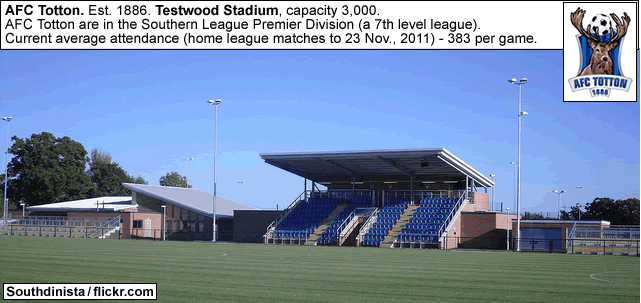
Photo credit – Southdinista at Flickr.com. Southdinista’s Photostream.
…
(Late game on) Sunday, 4 December 5.00pm GMT/12:00 noon ET – Sutton United v Notts County – ESPN (UK) and Fox Soccer Plus (USA & Canada).
Sutton United FC are a just-promoted Conference South club, from southwest London (but from an area that historically was part of the County of Surrey). The U’s currently sit 3rd in Conference South, in the play-off places. Sutton United are averaging 776 per game (home league matches to 26 Nov. 2011).
Notts County FC, the oldest professional association football club in the world, are these days an upper-mid-table 3rd level club. The Magpies currently sit 6th in League One, in the play-off places; and average 6,210 per game. The random element of the FA Cup draw has seen these two clubs match up three times now in the last 18 FA Cup competitions (Notts County hosted and defeated Sutton United in the 1993-94 FA Cup Third Round; and also in the 2008-09 FA Cup First Round).
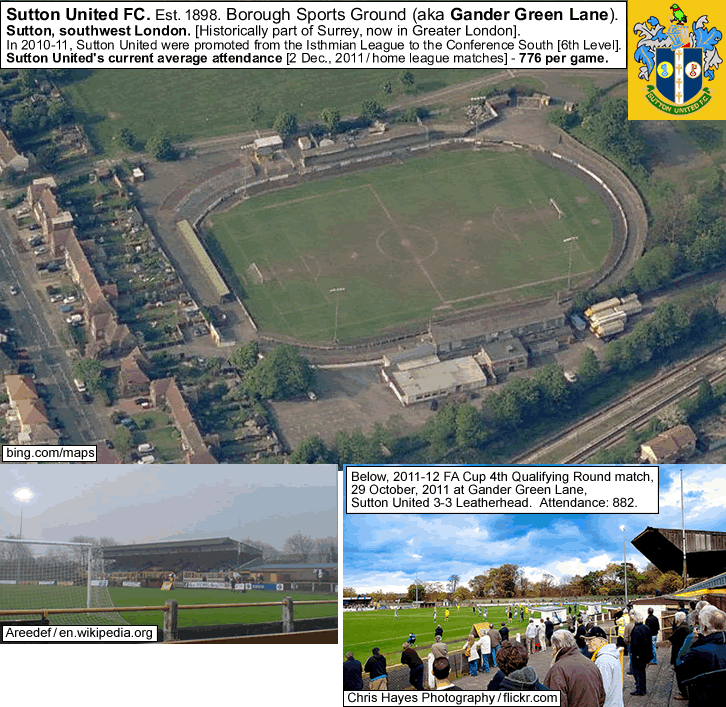
Image and photo credits – Bing.com/maps/Bird’s Eye satellite view.
Areedef at en.wikipedia.org/Borough_Sports_Ground.
Chris Hayes at Flickr.com/ Chris Hayes’ Photostream.
-
Sutton United’s FA Cup Giant Killing – January, 1989 – Sutton United 2-1 Coventry City…
23 years ago, on 7 January, 1989, Sutton United claimed one of the biggest scalps in FA Cup history, when they upset the 1987 FA Cup winners Coventry City. In 1988-89, Sutton United were a mid-table 5th Level Conference club, while Coventry City were a very solid top flight club in 1988-89…Coventry finished in 7th place that year in the old First Division, and the Sky Blues were in the middle of a 34-season-straight-run in the First Division / Premier League (from 1967-68 to 2000-01).
An overflow crowd of over 8,000 attended that match at Gander Green Lane in early 1989, with more watching from gardens and second-story windows of adjacent buildings. Sutton won 2-1, with bricklayer-by-trade Matthew Hanlan winning it in the 60th minute with his far-post volley off a cross from Phil Dawson, who had collected the ball from a short, decoy corner-kick. You can see images from that historic upset below.
From Youtube, posted by hammerfalljag, ‘Sutton Utd v Coventry City FA Cup 1988-89 Highlights‘ [4:43 video]…1st goal (Sutton United, Tony Rains, 42′) at 1:08 of video. 2nd goal (Coventry City, David Phillips, 52′) at 2:05 of video. 3rd and winning goal (Sutton United, Matthew Hanlan, 60′) at 2:50 of video.

Screenshots (4) from Youtube video posted by hammerfalljag, ‘Sutton Utd v Coventry City FA Cup 1988-89 Highlights‘ [4:43 video].
Photo credits – Hanlan goal; and Rains and Hanlan celebrating, from http://www.suttonunited.net/info_history.html
Thanks to SuttonUnited.net.
Thanks to FleetwoodTownFC.com.
Thanks to the contributors to the pages at en.wikipedia.org, ‘2011-12 FA Cup‘.
Thanks to ESPN Soccernet for Football League attendance figures (link set at League One attendance).
Thanks to Soccerway.com for Conference attendance figures (link set at Conference National).
Thabnks to NonLeague.co.uk for attendance figures for 7th and 8th Level leagues.

